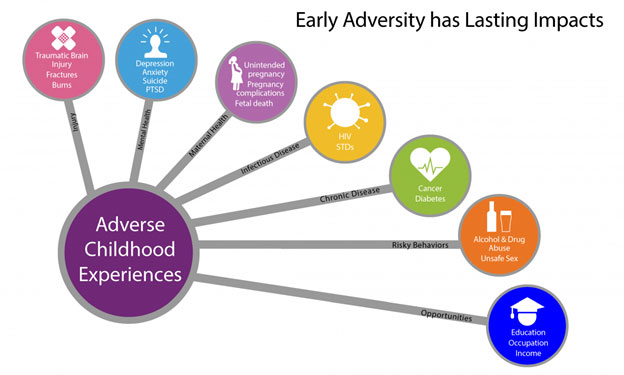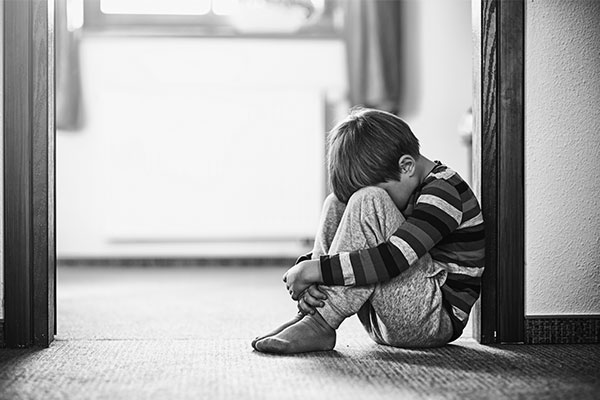Impact of Adverse Childhood Experiences

Adverse Childhood Experiences (ACEs) have a tremendous impact on future violence, victimization, perpetration, and lifelong health and opportunity. Working together, we can help create neighborhoods, communities and a world in which every child can thrive.
According to the Centers For Disease Control (CDC), Adverse Childhood Experiences, or ACEs, are potentially traumatic events that occur in childhood (birth to 17 years) such as experiencing violence, abuse, or neglect; witnessing violence in the home; and having a family member attempt or die by suicide. Also included are aspects of the child’s environment that can undermine their sense of safety, stability, and bonding such as growing up in a household with substance misuse, mental health problems, or instability due to parental separation or incarceration of a parent, sibling, or other member of the household.
Adverse Childhood Experiences have been linked to
- risky health behaviors
- chronic health conditions
- low life potential and
- early death
As the number of ACEs increases, so does the risk for these outcomes.
The presence of ACEs does not mean that a child will experience poor outcomes. Children’s positive experiences or protective factors can prevent children from experiencing adversity and can protect against many of the negative health and life outcomes even after adversity has occurred.
It is important to address the conditions that put children and families at risk of ACEs so that we can prevent ACEs before they happen.
The CDC has developed a resource, Preventing Adverse Childhood Experiences: Leveraging the Best Available Evidence to help states and communities leverage the best available evidence to prevent ACEs from happening in the first place as well as lessen harms when ACEs do occur.






















